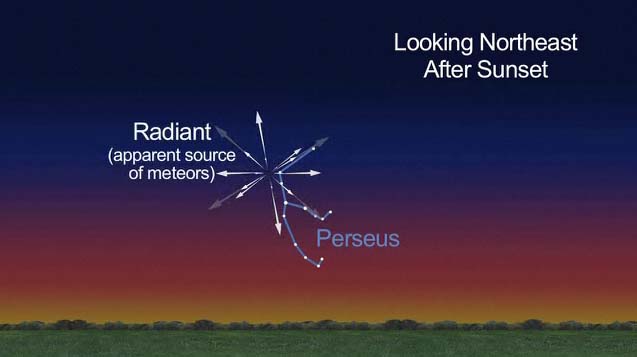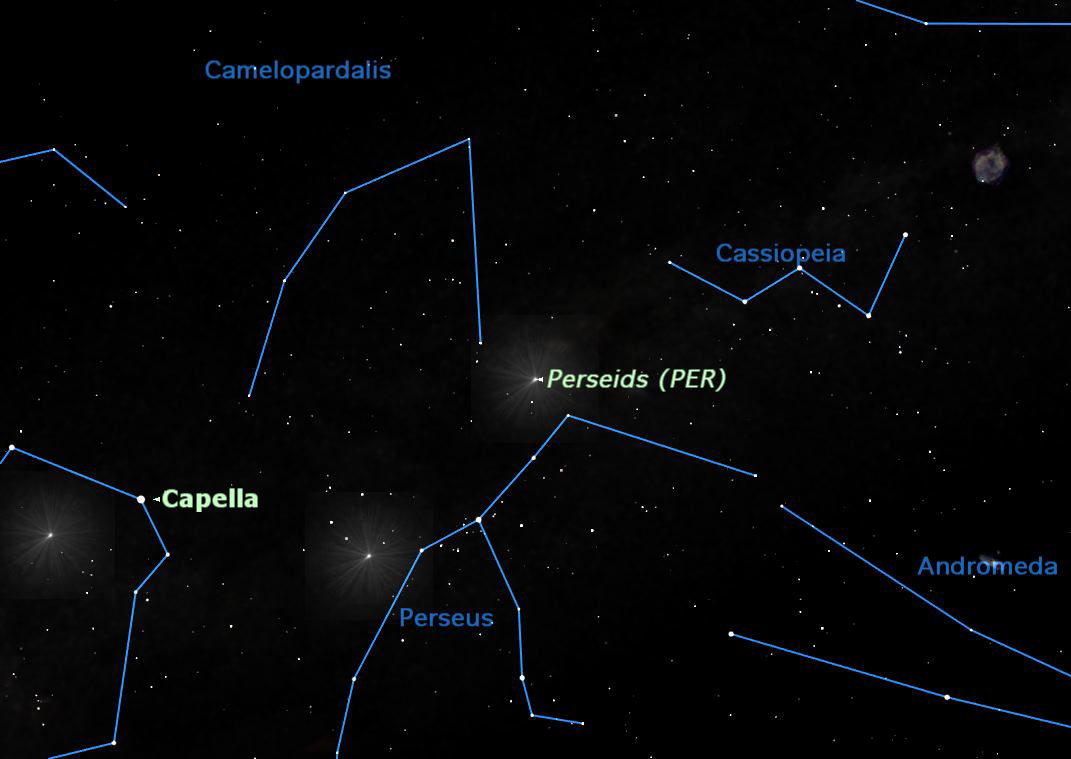Perseid Meteor Shower Peaks Tonight: How to Watch

UPDATE: The Perseid meteor shower of 2012 wowed skywatchers around the world over the weekend. You can see our full gallery of the 2012 Perseids here: Amazing Perseid Meteor Shower Photos of 2012
If you watch one meteor shower all year, then catch the overnight Perseid shooting star display tonight.
This weekend, the annual Perseid meteor shower peaks, sending hundreds of shooting stars flying through the night sky in what many experts call the best shower of the year.
"We expect to see meteor rates as high as a hundred per hour," Bill Cooke of NASA's Meteoroid Environment Office said in a statement. "The Perseids always put on a good show."

To see the Perseid meteor shower, all you need are your naked eyes and a relatively dark spot to view from. Avoid light pollution if at all possible, as city lights can obscure all but the brightest meteors. And weather conditions such as clouds can also dampen the sights, so if you catch a clear weather window, take advantage of it.
The peak of the meteor shower should occur between midnight and 9 a.m. EDT (0400 and 1300 GMT, or UT) on Sunday, Aug. 12. However, viewing during dark hours between now and the beginning of next week should provide ample meteor sights. The dark hours between Saturday night and Sunday morning should be especially fruitful for meteor hunting. [Spectacular Perseid Meteor Shower Photos]
The shooting stars will appear to radiate from the constellation Perseus, named after the ancient Greek hero — hence the name Perseids.
Get the Space.com Newsletter
Breaking space news, the latest updates on rocket launches, skywatching events and more!
This peak occurs as planet Earth passes through the trail of debris left behind by comet Swift-Tuttle. Bits of rock and ice from the comet slam into Earth's atmosphere, burning up to create short-lived streaks of light that we see as shooting stars. Our planet meets with Swift-Tuttle's trail every year in late July or early August.
This year's pass through the Perseids will be extra-special because of a celestial show going on now. The bright planets Jupiter and Venus, along with the crescent moon, are visible in the night sky alongside the Perseids, offering an especially dazzling sight for stargazers. These planets, and the moon, will be aligned in the eastern sky before dawn Aug. 11 to Aug. 13.
Luckily for observers, the moon should not be bright enough to obscure most meteors, but should provide a complementary celestial wonder to behold.
"Sky watchers say there's nothing prettier than a close encounter between the slender crescent moon and Venus — nothing, that is, except for the crescent moon, Venus and a flurry of Perseids," astronomer Tony Phillips wrote on the Science@NASA website.
Editor's note: If you snap an amazing photo of the 2012 Perseid meteor shower that you'd like to share for a possible story or image gallery, send images and comments (including name and location) to managing editor Tariq Malik at tmalik@space.com.

Follow SPACE.com on Twitter @Spacedotcom. We're also on Facebook & Google+.
Join our Space Forums to keep talking space on the latest missions, night sky and more! And if you have a news tip, correction or comment, let us know at: community@space.com.

Space.com is the premier source of space exploration, innovation and astronomy news, chronicling (and celebrating) humanity's ongoing expansion across the final frontier. Originally founded in 1999, Space.com is, and always has been, the passion of writers and editors who are space fans and also trained journalists. Our current news team consists of Editor-in-Chief Tariq Malik; Editor Hanneke Weitering, Senior Space Writer Mike Wall; Senior Writer Meghan Bartels; Senior Writer Chelsea Gohd, Senior Writer Tereza Pultarova and Staff Writer Alexander Cox, focusing on e-commerce. Senior Producer Steve Spaleta oversees our space videos, with Diana Whitcroft as our Social Media Editor.









